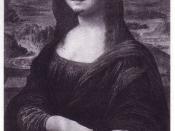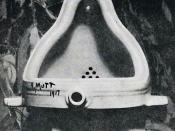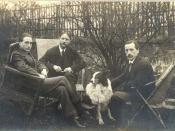The statement "artist frequently break traditions in order to challenge the audience's perception" can be supported when addressing the art movement Dada. Dadaists such as Marcel Duchamp and Kurt Schwitters produced unconventional art works that provoked the audience to consider what art really was.
One of the first large scaled movements to translate art into provocative action. From 1915 Dada produced many of the most anarchic, playful, antibourgeois, anti-rational, confrontational and nihilistic works made during the twentieth century. Dada began as an indictment of the bourgeois values responsible for the horrors of the war, and assumed many forms such as outrageous performances, festivals, readings, erotic mechanomorphic art, nonsensical chance, generated poetry, found objects, and political satire in photomontage. Its main purpose, however, whether it carried a social or political message or not, was to shock the audience.
The art works produced by Dadaists was something created with unconventional form and produced by unorthodox means challenging the audience's perception as to what art was.
In previous years, artist had been limited to certain styles of art by their patrons. Patrons commissioned artworks to convey authority and power, ensure fame and memory, or to demonstrate their spiritual virtues and worthiness. Hence, the audience had been lulled into believing the definition of art was to convey such aspects in a precise a manner as possible. The Catholic Church and government institutions had been major art patrons up until the late nineteenth century. By this time it had become more common for artists to sell their work uncommissioned. This system allowed artists to work more independently and nurture new ideas.
The purpose to challenge the audience is clearly seen in Marcel Duchamp's Bicycle Wheel (1951) as two common place items have been put together, given a title, and exhibited be a practising artist...


